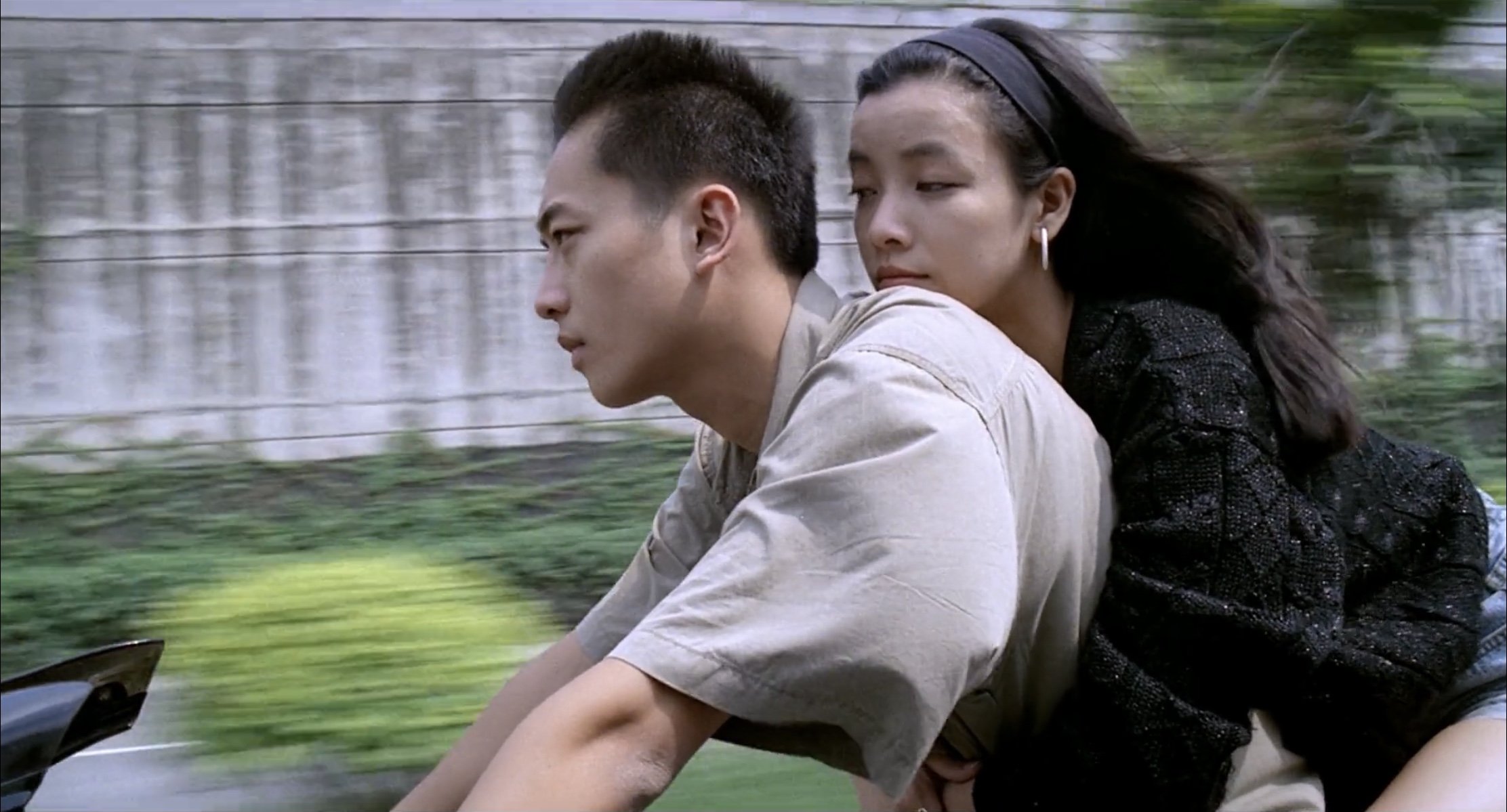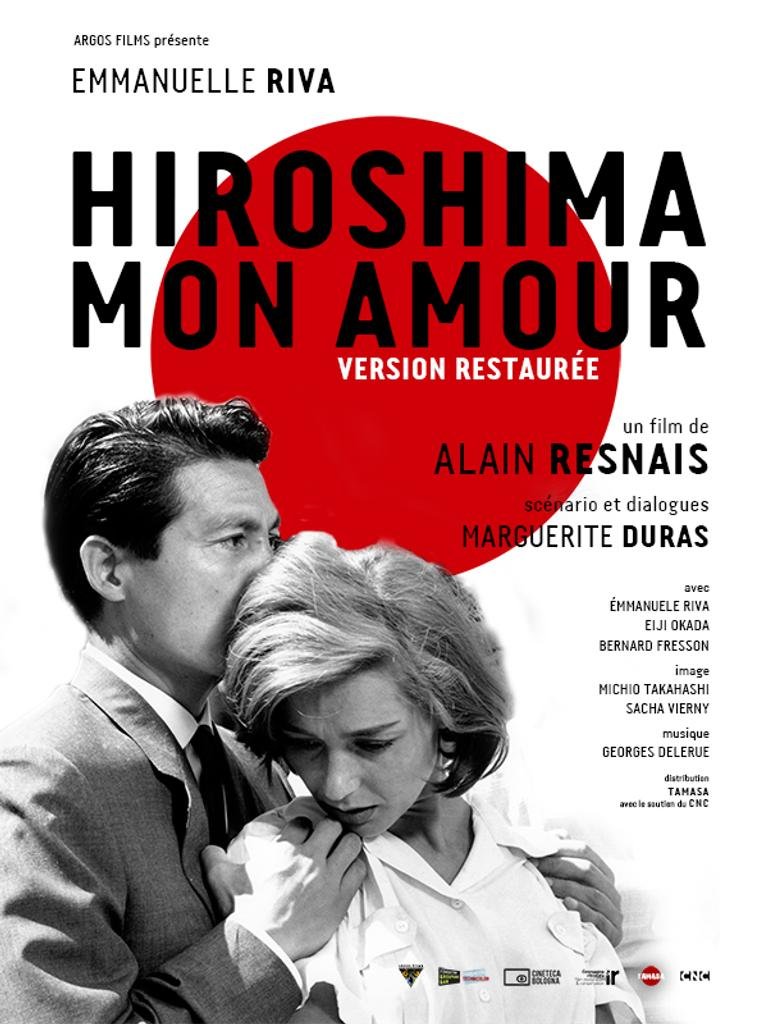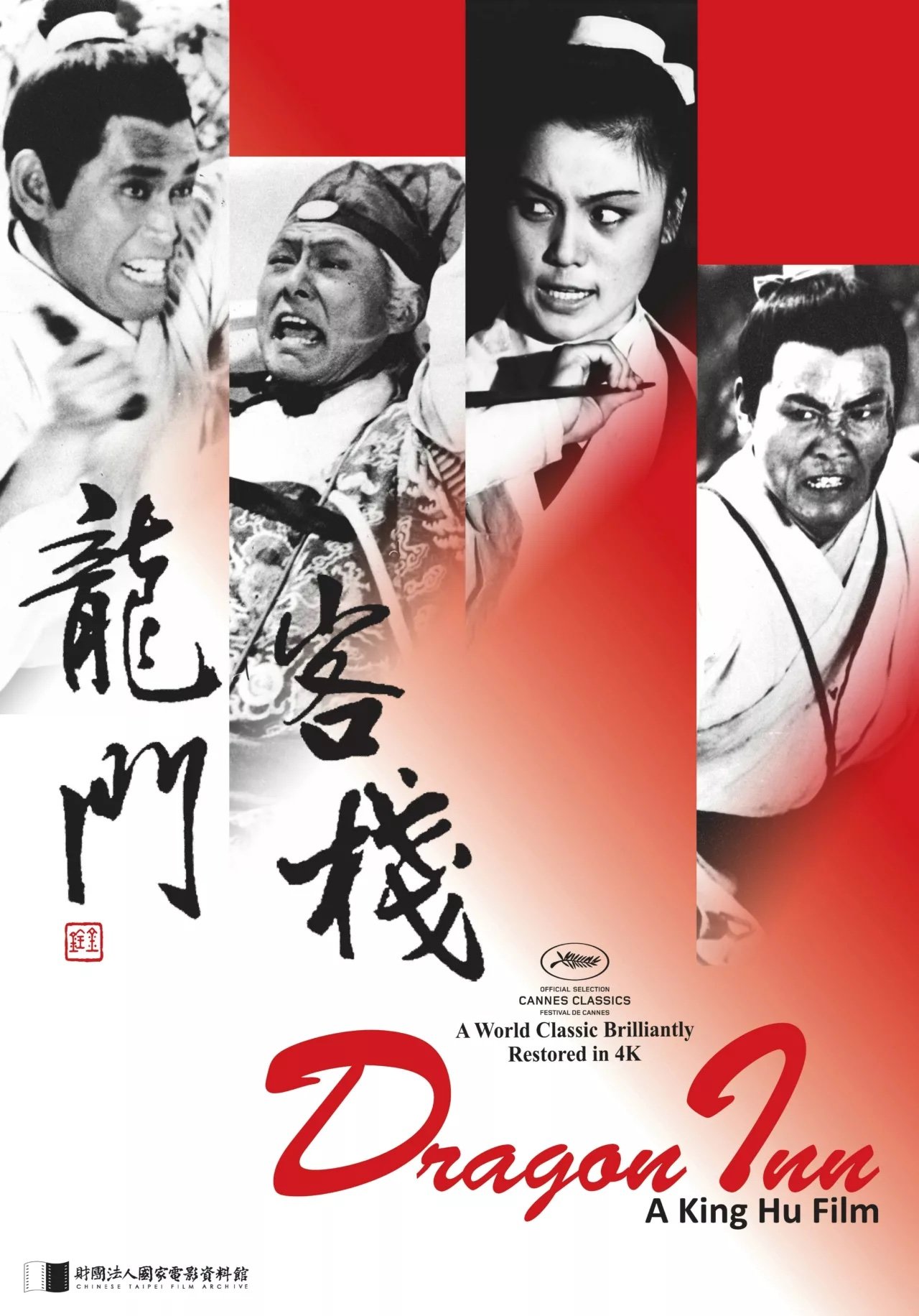A Sabukaru guide to Tsai Ming-Liang movies

This guide aims to provide a comprehensive introduction and Sabukaru-friendly overview of Tsai Ming-Liang's filmography, encompassing all the titles from the beginning of his career.
It goes beyond a mere listing of plot summaries, instead offering a collection of insights akin to those you would receive from a friend.
Expect quick glances on the visual aesthetics of specific scenes and the overall atmosphere of each film.
Naturally, we will avoid any spoilers to ensure an enjoyable reading experience.
So, find a comfortable spot, secure your phone, adjust your laptop screen, and get ready for an immersive exploration of the finest Taiwanese urban dramas.
Last but not least, we are lucky because the Internet Archive digital library has collected 8 out of 11 films by Tsai Ming Liang, freely accessible through the platform.
Tsai Ming-liang, the basics
Born in Malaysia in 1957, Tsai Ming-liang's journey into filmmaking began with an early fascination for the arts. He later pursued his passion at the Taipei National University of the Arts, where he honed his skills and developed a unique artistic voice that would redefine Taiwanese cinema.
Tsai's filmography is a masterclass in evocative storytelling, often depicting the struggles of urban life and human loneliness with an arresting and contemplative visual language.
Tsai Ming-Liang stands out for his artistic choices that render his movies truly unique and special.
However, it must be acknowledged that these choices can also make his films quite laborious.
Here's a short breakdown of these distinctive elements:
no soundtrack
no dialogues
long takes
there you go.
Now you might wonder why you should watch his movies, and the reason is quite simple.
Tsai Ming-Liang's cinema relies on the simplicity of the scenes and minimal props, serving as remarkable tools to convey his artistic vision.
All of his movies revolve around the theme of alienation, particularly within the context of a bustling city like Taipei, where most of his films are set.
Rebels of the neon God [青少年哪吒], 1992
Two friends in a telephone booth. They light a cigarette. Outside it’s raining. It always rains in Taipei. It’s dark. Are they calling someone? No, they are about to steal the coins from it. That’s how the movie starts.
Throughout the film, the soundtrack is sparingly used, making appearances only twice. Firstly, it emerges at the beginning and later resurfaces as a refrain near the end.
It consists of a single track arrangement of repeated notes with a gritty, grunge-like tone reminiscent of American thriller movies.
This sonic cue foreshadows an impending event, but the specifics remain unknown. However, as this low chord resonates, it manages to evoke a visceral reaction, leaving you with a sense of anticipation.
"Have you heard about the Neon God?" inquires the wife to her husband.
The identity and significance of the Neon God, as well as the rebels, remain undisclosed throughout the film.
The answers are not directly provided, leaving the audience to ponder and draw their own conclusions as the story unfolds.
We would like to interpret the movie as follows.
There is a famous Italian Futurist painting titled 'La città che sale,' which translates to 'The City Rises' in English.
The meaning of the painting can be interpreted as a celebration of the transformation of cities into rapid industrial and technological development.
The film precisely addresses this, but instead of being a celebration of technological progress, it tells the story of the "rebels" to this revolution - those who live an alienated, solitary life, seemingly without a way out.
You can watch the movie here.
2. Vive l’amour [愛情萬歲], 1994
In this film, we follow the journey of a solitary individual, almost as if it were a continuation of the first film.
He continues to be the protagonist, carrying the same overall atmosphere.
He now works for a crematory agency and occupies vacant houses listed in the real estate market as his temporary home.
His life takes an unexpected turn when he crosses paths with an attractive woman who happens to work for the real estate agency managing the house he is currently squatting in.
Complications arise when the woman starts bringing her boyfriend to the same house.
However, their lives never truly converge. The woman remains unaware to the existence of the abusive tenant.
This recurring theme of parallel lives intersecting without genuine connection serves as a poignant motif in Tsai Ming-Liang's films, further highlighting the isolating experiences endured by the protagonists.
The film explores the theme of sexual desire, portraying how it can emerge within a backdrop of loneliness and social unease.
The young man frequently witnesses the intimate relationship between the couple and begins to develop instinctual feelings for both of them.
You can watch the movie here.
3. The river [河流], 1997
During the shooting of a movie scene set by a river, a director encounters a problem - the dummy used as a dead body fails to appear realistic enough. This poses a challenge to the director's vision.
As is often the case in Tsai Ming-Liang's films, the theme of the father-son relationship remains a constant presence.
However, in this particular film, the director delves into additional themes of betrayal and homosexuality.
The father character harbors a secret involvement in a tumultuous relationship with a younger man he encounters in a hotel room.
Meanwhile, the mother is engaged in a romantic liaison with another man.
These complex relationships and their associated tensions form key aspects of the film's narrative exploration.
You can watch the movie here.
4. The hole [洞], 1998
As the new millennium dawns, Taipei is struck by an unidentified epidemic. The authorities implement measures to combat the outbreak, including evacuating residents from the affected areas and cutting off the water supply to encourage people to abandon their homes.
Once again, in this film, the lives of two strangers intersect, bound together by their shared experiences of discomfort and isolation.
Tsai Ming Liang's films consistently exhibit an inclination towards individuals who have lost their way.
It is as if their solitariness draws them towards one another, even though their lives always remain on the periphery.
In this rain-drenched Taipei, plagued by a mysterious virus, rainfall is incessant.
Amidst the downpour, subtle references to American culture surface, much like the previous films' allusion to Hollywood icon James Dean.
These moments intertwine with scenes of ballet infused with hints of hula hoop or rockabilly, adding an intriguing blend of artistic elements to the narrative.
On the streets, a guy earns a living by selling watches. One day, a girl approaches him and asks if she can purchase the watch he wears on his own wrist. Reluctantly, he declines, as it is believed to be unlucky to give away something personal while mourning.
he girl is preparing to travel to Paris and requires a watch with dual time zones.
When she finally leave for Europe with the watch the guy starts to become obsessed with Paris.
The boy's fascination with Paris intensifies, leading him to acquire VHS tapes of films like "Hiroshima Mon Amour."
Meanwhile, the boy's mother eagerly anticipates the return of her departed husband, searching for signs and symbols that appear to her daily.
Loneliness is alwayes present in Tsai Ming-Liang’s characters’ life. As she travel to Paris she finds herself more lonely then before. Although she encounters another girl, she still struggles to move on from her grief and find solace.
You can watch the movie here.
6. Goodbye, Dragon Inn [不散], 2003
Another slow-paced, meditative exploration of loneliness and human connection, set in a dilapidated cinema called the "Dragon Inn."
Probably among the director's most well-known works it is also known as "Bu san" in Chinese, which translates to "Goodbye, Dragon Inn."
"Dragon Inn" refers to the actual title of a classic Taiwanese wuxia film released in 1967, directed by King Hu.
Tsai Ming-liang's "Goodbye, Dragon Inn" takes place in a run-down cinema that is screening the original "Dragon Inn" on its last night before closing down.
The film pays homage to the old cinema and the experience of watching movies in a traditional theater setting, which was gradually being replaced by modern multiplexes during the time the film was made.
Tsai Ming-liang's choice of the title "Goodbye, Dragon Inn" reflects his own farewell to the declining era of traditional cinema and his nostalgia for the bygone days of film-watching culture.
It also symbolizes the end of an era and the transient nature of human existence. The film's slow pace and minimal dialogue contribute to a sense of emptiness and longing, capturing the loneliness of the characters and the melancholic atmosphere of the cinema's final night.
While the main focus is on the decline of traditional cinema, Tsai Ming-Liang keeps addressing subtle nods to Western cinema, here with the presence of a clip from the American film "Rio Bravo" (1959), directed by Howard Hawks, playing within the story.
Overall, "Goodbye, Dragon Inn" is a poetic and introspective film that explores themes of nostalgia, isolation, and the ephemeral nature of life and cinema.
You can watch the movie here.
7. The Wayward Cloud [天邊一朵雲], 2005
In the sequel to the critically acclaimed film "What Time Is It There," Hsiao-Kang takes on a new role, this time as a porn actor.
Hsiao-Kang and the female protagonist, who had previously crossed paths before her departure for France, find themselves again on a scorching summer day in Taipei.
The director skillfully intertwines the theme of sex throughout the narrative, often using the symbolic imagery of watermelons.
The watermelon's juicy and sensual qualities make it a fitting symbol for desire and sexuality. Just as the watermelon is associated with physical pleasure and indulgence, the film explores the characters' complex and sometimes taboo desires.
The watermelon serves as a visual metaphor for the intense and often conflicting emotions that arise from their sexual experiences.
Furthermore, the watermelon in the film can also be seen as a representation of societal issues.
Taiwan's water crisis is indeed subtly connected to the watermelons. In moments of water scarcity, the government suggests drinking juice obtained from this fruit - which is primarily composed of water.
The scarcity of water parallels the scarcity of intimacy and connection experienced by the characters.
"The Wayward Cloud" again pays homage to American cinema, incorporating numerous musical elements reminiscent of a classic musical.
Through these interludes, Tsai Ming-liang adds a layer of theatricality and whimsy to the film, creating a unique blend of genres that transcends traditional storytelling.
Through the exploration of Hsiao-Kang's unconventional career choice as a porn actor, the film challenges societal norms and sheds light on the lengths people are willing to go to survive in an unforgiving world.
It raises questions about the complexities of human desire, the consequences of personal choices, and the ever-present struggle for fulfillment and connection.
8. I Don’t Want to Sleep Alone [黑眼圈], 2006
This film shows, perhaps for the first time, the act of caring for others. And it is also the first film not shot in Taiwan. Lee Kang Sheng plays a dual role, portraying a homeless foreigner and a paralyzed man.
After fainting on the street, he is rescued by people who then take care of him until he recovers.
The city where the story takes place is plagued by a severe air pollution crisis. It is not specifically mentioned whether it is a plague or a sandstorm. However, the polluted and unbreathable air becomes a central element of the film, influencing the characters' lives and creating a sense of oppression and alienation in the city.
9. Face [臉], 2009
This movie was made with a collaboration with the Louvre Museum in Paris, making it a unique piece of art.
"Face”, or “Visage” in the French version, is an experimental work that blurs the boundaries between visual art and narrative storytelling.
The film revolves around a Taiwanese director, played by Lee Kang-Sheng, who travels to Paris to shoot a movie.
However, he becomes afflicted with a mysterious facial paralysis, rendering him unable to speak or express his emotions.
As a result, his interactions with the people around him, including his mother (also played by Lee Kang-Sheng), a female producer, and a lonely woman, take on a silent and contemplative nature.
As the movie unfolds, themes of communication, alienation, and cultural displacement emerge. The characters' struggles to connect and understand each other become a metaphor for the broader issues of globalization and the loss of cultural identity in a modern, fast-paced world.
10. Stray Dogs [郊遊], 2013
Two children sleep next to each other, deeply immersed in slumber. The mother silently combs her hair with detachment and melancholy. Yes, this is yet another, and perhaps the most contemplative, of all Tsai Ming-Liang's films.
"Stray Dogs," directed by Tsai Ming-Liang, is a mesmerizing film that delves into the lives of a destitute family struggling to survive in modern Taipei.
The movie centers around a father, played by Lee Kang Sheng, who works as a human billboard while living in abject poverty.
Through long, contemplative takes, Tsai Ming-Liang captures the bleakness and isolation of urban life, showcasing the characters' search for connection and meaning amidst their dire circumstances.
Again, the film's minimalist style and evocative cinematography immerse viewers in a world of silence, where gestures and expressions speak louder than words.
This film, like the others, also incorporates recurring motifs and striking imagery, such as the use of a cabbage as a metaphor for survival and the presence of a mural representing a serene natural landscape amidst the urban decay.
11. Days [日子], 2020
The last movie of Tsai Ming-liang finds a notable aspect in its narrative structure, or rather, its lack thereof. Unlike many conventional films that follow a traditional plotline, this movie embraces a more experimental and episodic format.
It consists of two separate stories, each focusing on a solitary male character, always played by Lee Kang-sheng.
The film allows the audience to observe these characters' daily lives, routines, and experiences in an intimate and unhurried manner.
This unconventional narrative structure invites viewers to reflect on the mundane aspects of existence and the profound beauty that can be found in the ordinary.
With its unconventional narrative structure, emphasis on silence and stillness, and contemplative themes, the film invites viewers to engage in a reflective and introspective journey. By breaking away from traditional storytelling conventions, Tsai Ming-liang challenges the audience to perceive the extraordinary in the ordinary and find beauty in the quiet moments of life.













































